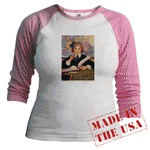| Introduction | Annotated Tales | eBooks | Bookstore | Illustration Gallery | Discussion Board | Blog |
 |
|
|
The Story of Mr Fox Return to Popular Rhymes and Nursery Tales by James Orchard Halliwell A simple, but very curious tale, of considerable antiquity. It is alluded to by Shakespeare, and was contributed to the variorum edition by Blakeway. Part of this story will recall to the reader's memory the enchanted chamber of Britomart. ONCE upon a time there was a young lady called Lady Mary, who had two brothers. One summer they all three went to a country seat of theirs which they had not before visited. Among the other gentry in the neighbourhood who came to see them was a Mr Fox, a bachelor, with whom they, particularly the young lady, were much pleased. He used often to dine with them, and frequently invited Lady Mary to come and see his house. One day, when her brothers were absent elsewhere, and she had nothing better to do, she determined to go thither, and accordingly set out unattended. When she arrived at the house and knocked at the door, no one answered. At length she opened it and went in, and over the portal of the door was written:
She advanced, and found the same inscription over the staircase; again at the entrance of a gallery; and lastly, at the door of a chamber, with the addition of a line:
She opened it, and what was her terror and astonishment to find the floor covered with bones and blood. She retreated in haste, and coming down stairs, she saw from a window Mr Fox advancing towards the house with a drawn sword in one hand, while with the other he dragged along a young lady by the hair of her head. Lady Mary had just time to slip down, and hide herself under the stairs, before Mr Fox and his victim arrived at the foot of them. As he pulled the young lady upstairs, she caught hold of one of the bannisters with her hand, on which was a rich bracelet. Mr Fox cut it off with his sword: the hand and bracelet fell into Lady Mary's lap, who then contrived to escape unobserved, and got safe home to her brothers' house.
which he continued to repeat at every subsequent turn of the dreadful story, till she came to the circumstance of his cutting off the young lady's hand, when, upon his saying, as usual,
Lady Mary retorts by saying,
at the same moment producing the hand and bracelet from her lap. Whereupon the guests drew their swords, and instantly cut Mr Fox into a thousand pieces. Halliwell, James Orchard. Popular Rhymes and Nursery Tales. London: John Russell Smith, 1849. Return to Popular Rhymes and Nursery Tales by James Orchard Halliwell |
|
| ©Heidi
Anne Heiner, SurLaLune Fairy Tales E-mail: heidi@surlalunefairytales.com Page created 10/25/07; Last updated 10/25/07 www.surlalunefairytales.com |













